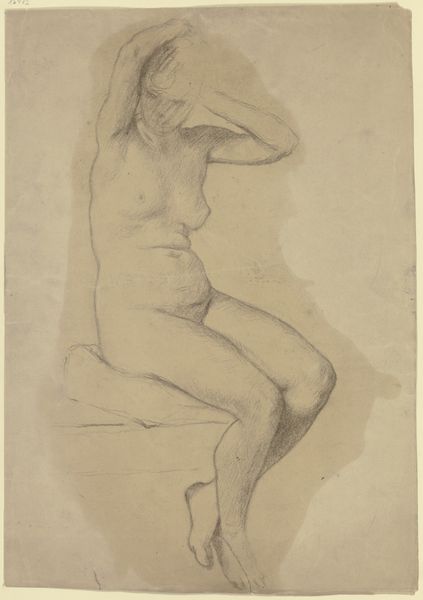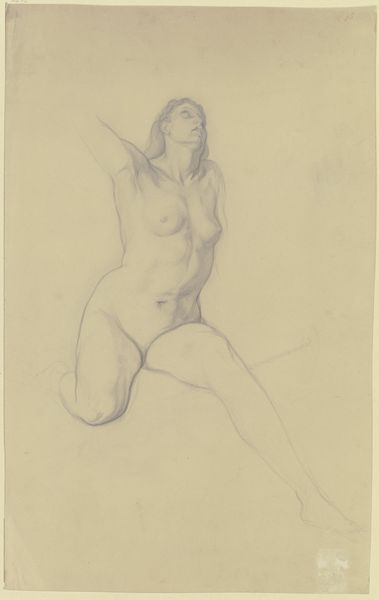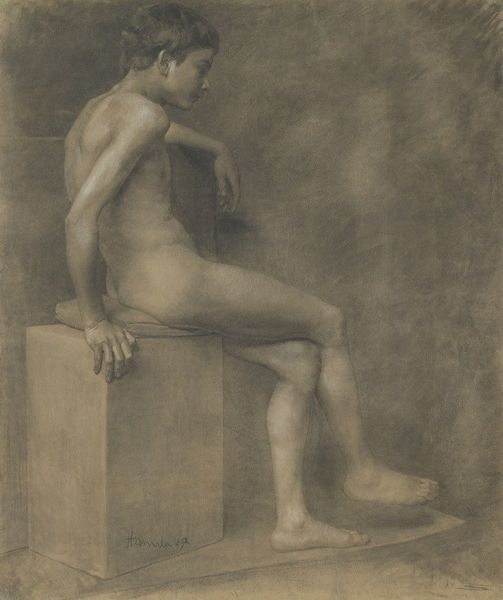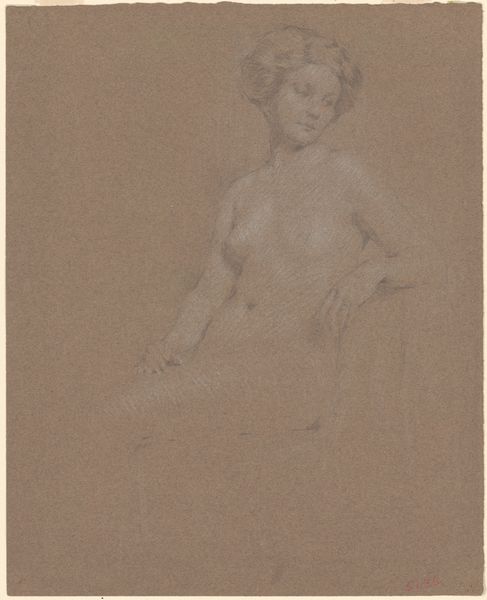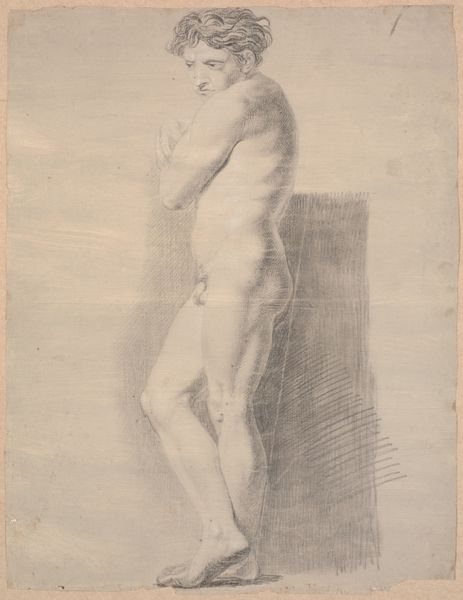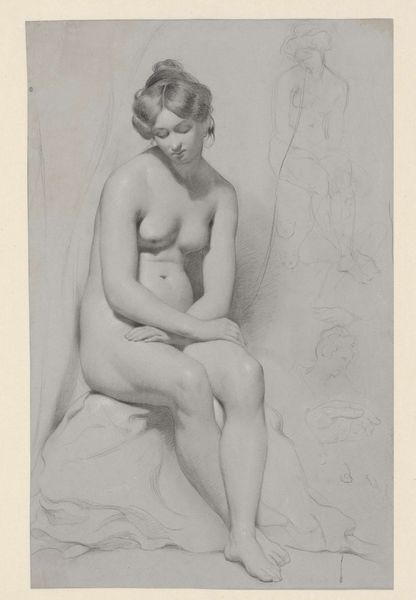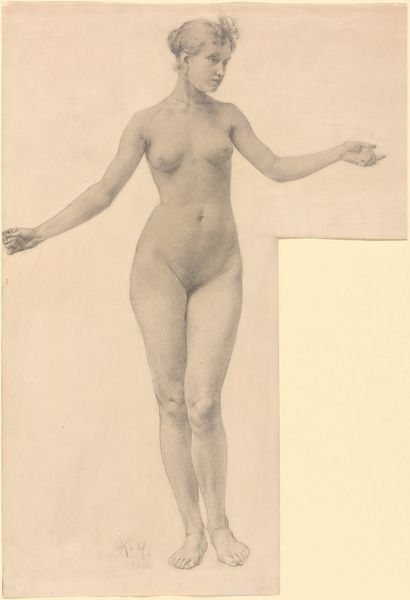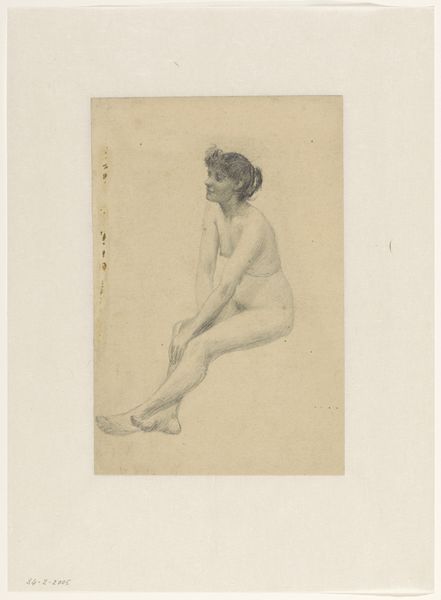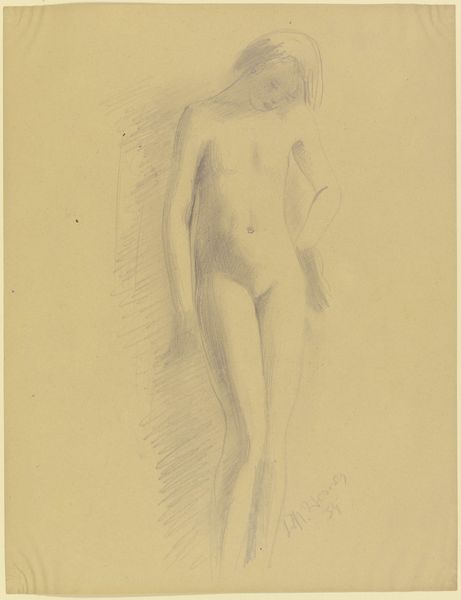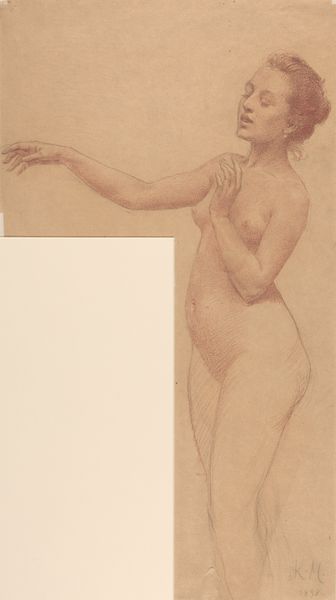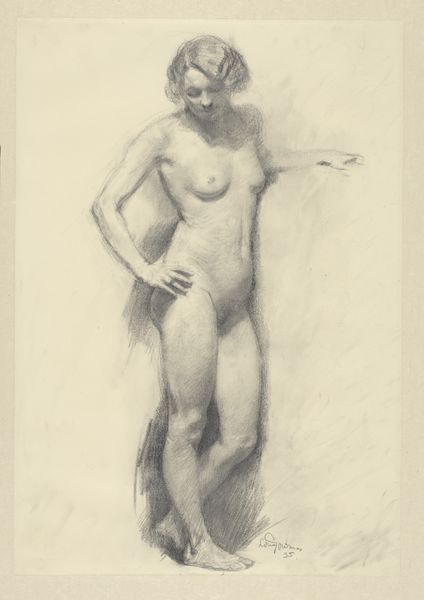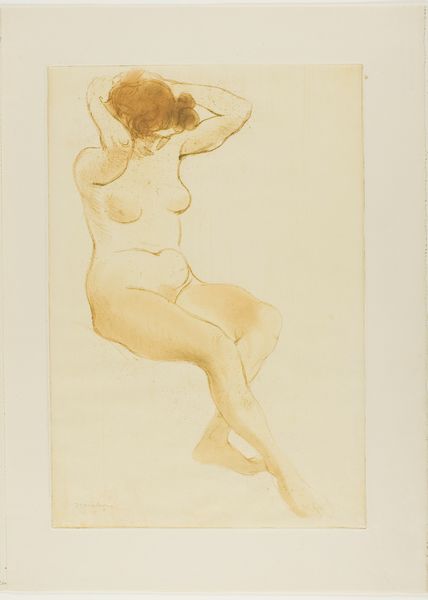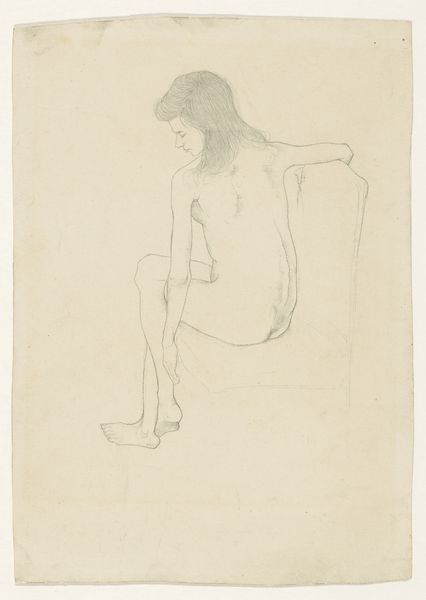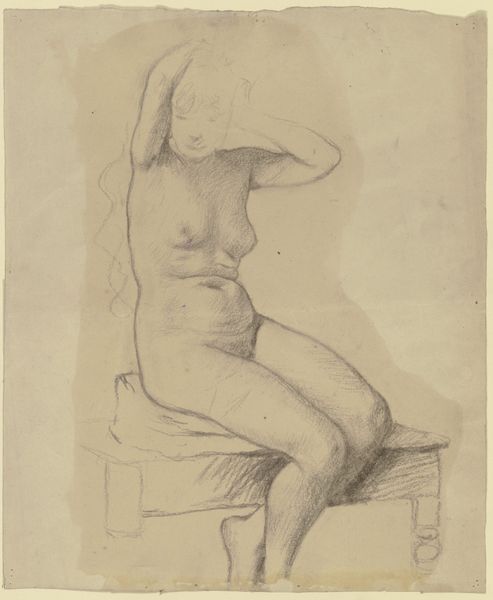
drawing, pencil
#
portrait
#
drawing
#
figuration
#
pencil
#
academic-art
#
nude
#
realism
Copyright: Public Domain: Artvee
Editor: We’re looking at James Abbott McNeill Whistler’s “Study of a Nude Model” from 1906, a pencil drawing. The light touch of the pencil gives it an ethereal feel. What catches your eye in terms of artistic approach? Curator: It's fascinating to consider Whistler's process. A materialist reading would explore the specific pencil he chose and the paper’s surface. The economic availability of these materials also shaped artistic creation at the time, particularly influencing who could afford to create such works. How do these factors play into our understanding of realism? Editor: I see your point. It's not just about the realistic depiction of the figure, but also about the reality of the artist's working conditions and material choices. Does the model's pose or the composition suggest something about the role of labor in producing this piece? Curator: Precisely. The model's pose, seemingly relaxed, belies the labor involved in holding it. Whistler’s choice to depict this “everydayness” – which included paying a model - challenged the traditional, romanticized view of artistic creation. By using a less refined material, the pencil, Whistler seems to be challenging the existing social stratification, allowing common people and ordinary labor to be noticed in fine art. Editor: That's interesting. So, it’s almost like he's bringing the production of art, and the human element involved, into focus? Curator: Absolutely. And think about how this drawing might have been circulated - was it intended as a study, or a finished piece? The potential for reproduction and mass consumption further complicates its meaning, impacting its value. Editor: I never considered that. Looking at it that way gives it a whole new layer of meaning. I’ll definitely keep the relationship between materials, labour, and the art market in mind moving forward. Curator: Excellent! Understanding the material reality surrounding a work helps us to interpret its historical significance in a more nuanced way.
Comments
No comments
Be the first to comment and join the conversation on the ultimate creative platform.
